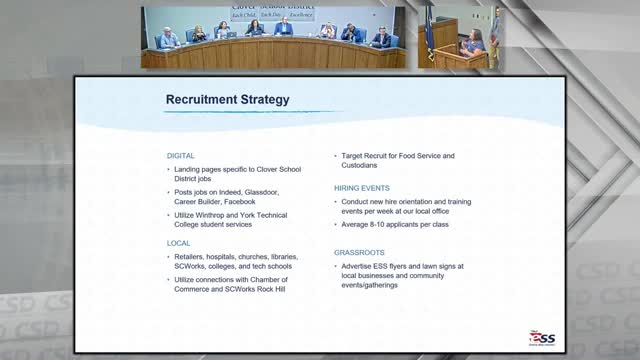Schools tackle substitute shortage with innovative hiring strategies
August 26, 2024 | York 02, School Districts, South Carolina
This article was created by AI summarizing key points discussed. AI makes mistakes, so for full details and context, please refer to the video of the full meeting. Please report any errors so we can fix them. Report an error »

In a recent government meeting, officials discussed significant improvements in the fill rate for substitute teachers, attributing this success primarily to increased hiring efforts. The conversation highlighted the importance of flexibility for substitutes, as they often choose where and when to work. To support this, schools have been proactive in hiring more substitutes and implementing a system of building substitutes—dedicated personnel who are available daily to fill last-minute assignments.
The hiring strategy has reportedly led to a more robust pool of substitutes, which has been essential in addressing staffing shortages. Participants noted that substitutes are more likely to return to schools where they feel supported by administration and where teachers provide clear plans for their classes. Additionally, a previous increase in substitute pay was mentioned as a contributing factor to the improved fill rate.
Despite these advancements, the meeting also addressed the ongoing challenge of an 8% shortfall in filled substitute positions. Officials explained that schools are working collaboratively to manage these gaps, often utilizing campus liaisons to share resources among schools. Teachers and teaching assistants are also being asked to step in when necessary, although this practice has reportedly decreased compared to previous years.
Overall, the discussions underscored the importance of strategic hiring and supportive school environments in retaining substitute teachers, while also acknowledging the need for continued efforts to address any remaining staffing challenges.
The hiring strategy has reportedly led to a more robust pool of substitutes, which has been essential in addressing staffing shortages. Participants noted that substitutes are more likely to return to schools where they feel supported by administration and where teachers provide clear plans for their classes. Additionally, a previous increase in substitute pay was mentioned as a contributing factor to the improved fill rate.
Despite these advancements, the meeting also addressed the ongoing challenge of an 8% shortfall in filled substitute positions. Officials explained that schools are working collaboratively to manage these gaps, often utilizing campus liaisons to share resources among schools. Teachers and teaching assistants are also being asked to step in when necessary, although this practice has reportedly decreased compared to previous years.
Overall, the discussions underscored the importance of strategic hiring and supportive school environments in retaining substitute teachers, while also acknowledging the need for continued efforts to address any remaining staffing challenges.
View full meeting
This article is based on a recent meeting—watch the full video and explore the complete transcript for deeper insights into the discussion.
View full meeting